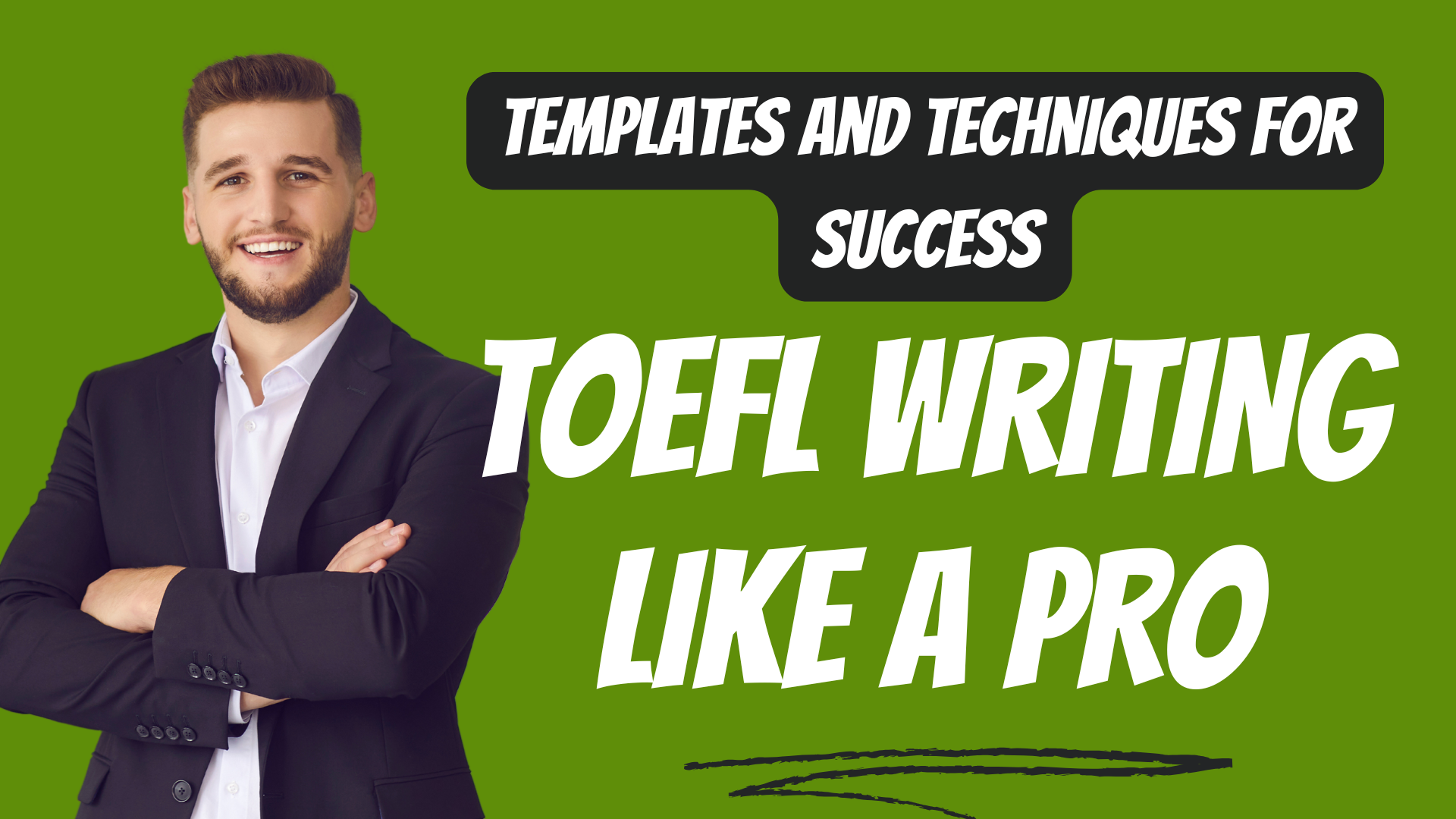Templates and Techniques for Success: TOEFL Writing Like a Pro
The TOEFL Writing section can feel like a mountain to climb, but what if you had a secret weapon to conquer it? The truth is, many top-scorers rely on well-structured templates to guide their essays. These aren’t just shortcuts; they’re frameworks that help you organize your thoughts, ensure coherence, and impress the graders.
Ready to unlock your writing potential? Let’s dive into how using TOEFL Writing templates can transform your approach and boost your score.
Why Templates are Your Best Friend for TOEFL Writing
Imagine trying to build a house without a blueprint. It’s tough, right? Templates work similarly for your essays. They provide a clear structure, ensuring you hit all the necessary points and present your arguments logically. This saves you valuable time during the exam and reduces the pressure of starting from a blank page.
Here’s why they’re so powerful:
- Structure and Organization: Templates offer a ready-made outline, helping you arrange your ideas in a clear, cohesive manner.
- Time Management: No more staring blankly at the screen! Templates give you a starting point, allowing you to focus on developing your content rather than figuring out the essay’s flow.
- Cohesion and Coherence: They guide you in connecting your ideas smoothly with appropriate transition words and phrases.
- Completeness: Templates ensure you address all aspects of the prompt, leaving no stone unturned.
Decoding the TOEFL Writing Tasks: Integrated vs. Academic Discussion
The TOEFL Writing section has two distinct tasks, each requiring a slightly different approach:
1. Integrated Writing Task: The Summary Challenge
In this task, you’ll read a passage and then listen to a lecture on the same topic. Your goal is to summarize the key points from the lecture and explain how they relate to (usually, contradict) the points made in the reading.
Key elements for a high score:
- Clear Thesis Statement: Introduce the main topic and state how the lecture challenges or supports the reading.
- Paragraph-by-Paragraph Analysis: Dedicate each body paragraph to a specific point from the reading and its corresponding counter-argument or supporting detail from the lecture.
- Accurate Summarization: Don’t just list points; synthesize the information from both sources.
- Effective Transitions: Use phrases like “However,” “In contrast,” “Conversely,” or “Similarly” to show relationships between ideas.
A Simple Integrated Writing Template Structure:
- Introduction:
- Briefly introduce the common topic of the reading and lecture.
- State the reading’s main argument.
- State how the lecture generally responds to (e.g., contradicts, supports) the reading.
- Body Paragraph 1:
- Introduce the first point from the reading.
- Explain how the lecture addresses this point (e.g., offers a counter-argument, provides supporting evidence).
- Elaborate with specific details from the lecture.
- Body Paragraph 2:
- Introduce the second point from the reading.
- Explain how the lecture addresses this point.
- Elaborate with specific details from the lecture.
- Body Paragraph 3 (Optional but Recommended):
- Introduce the third point from the reading.
- Explain how the lecture addresses this point.
- Elaborate with specific details from the lecture.
- Conclusion (Optional):
- Briefly summarize the main ways the lecture relates to the reading.
2. Academic Discussion Task: Join the Conversation
This newer task requires you to respond to a professor’s question in an online class discussion format. You’ll see the professor’s prompt and two student replies, and your job is to add your own opinion, supported by examples and reasoning, while engaging with the other students’ views.
Key elements for a high score:
- Clear Stance: State your opinion clearly and directly in your opening.
- Strong Support: Provide specific reasons and examples to back up your opinion.
- Engage with Peers: Reference or respond to points made by the other students in the discussion.
- Academic Tone: Maintain a formal yet natural writing style.
A Simple Academic Discussion Template Structure:
- Opening Statement:
- Acknowledge the professor’s question.
- Clearly state your agreement/disagreement with one of the student posts or present your own unique perspective.
- Briefly introduce your main idea/reason.
- Elaboration and Support:
- Explain your main idea in more detail.
- Provide a specific example (personal experience, general knowledge, hypothetical scenario) that supports your point.
- Engage with Another Student (Optional but recommended for higher scores):
- Acknowledge a point from another student’s reply.
- Either agree and expand on it, or politely disagree and explain why.
- Concluding Thought:
- Briefly summarize your overall stance or reiterate your main point.
Pro Tips for Template Mastery
- Practice, Practice, Practice: Don’t just memorize templates. Practice using them with various TOEFL prompts to make them feel natural.
- Customize Your Content: Templates are skeletons; you need to flesh them out with your unique ideas and vocabulary.
- Vary Sentence Structure: While templates provide structure, avoid sounding robotic. Experiment with different sentence lengths and structures within your paragraphs.
- Proofread Religiously: Even with a perfect template, grammatical errors and typos can hurt your score. Always leave time for thorough proofreading.
- Learn Transition Words: A strong vocabulary of transition words and phrases (e.g., furthermore, in addition, consequently, nevertheless) will make your essays flow seamlessly.
By understanding the power of TOEFL Writing templates and dedicating time to practice, you’ll be well on your way to crafting clear, coherent, and high-scoring essays. Good luck!
- Beyond the Basics: Mastering the Nuances of English Grammar
- Staying Motivated on Your OET Journey: Overcoming Challenges and Achieving Your Goals
- Writing Success in the OET: Essential Techniques and Templates
- Free OET Practice Resources: Sharpen Your Skills Before the Test
- Providing Effective Feedback to Improve Students’ TOEFL Scores


